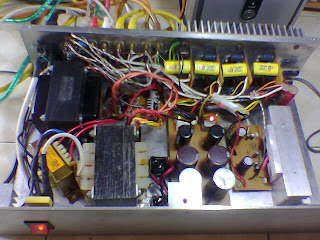How to Build a DIY LM3886T Subwoofer: A Step-by-Step Guide to Powerful and Accurate Bass
A subwoofer is an essential component of any high-quality audio system, delivering powerful and accurate bass that can transform the listening experience. The LM3886T amplifier chip is a popular choice for building a DIY subwoofer, as it offers high power output and low distortion. In this article, we'll take you through the process of building your own LM3886T subwoofer from start to finish, so you can enjoy rich and immersive bass in your home audio setup.
Understanding the LM3886T Subwoofer Circuit
- Introduce the LM3886T subwoofer circuit and its specifications, including its power output, frequency response, and distortion.
- Explain the benefits of using the LM3886T in a subwoofer project, such as its high signal-to-noise ratio and low output impedance.

Gathering the Materials and Tools You'll Need
- Provide a list of all the materials and tools required to build an LM3886T subwoofer, including the LM3886T chip, heat sink, capacitors, resistors, a crossover network, a subwoofer driver, and a cabinet.
- Explain where to source these materials and tools, and provide tips on finding the best deals.


Transformer 24-0-24 300Va for main power Amp.
 Rectifier and power supply board.
Rectifier and power supply board.
Building the LM3886T Subwoofer
- Provide a step-by-step guide to building the subwoofer, including assembling the crossover network, mounting the LM3886T chip, connecting the input and output connectors, and wiring the power supply.
- Provide detailed instructions on how to solder components, test for continuity, and troubleshoot any problems that may arise.
Lowpass filter use from this link
www.electronics-lab.com/
 Transformer 18-0-18 VAC for Lowpass fillter circuit.
Transformer 18-0-18 VAC for Lowpass fillter circuit. Rectifier and regurator Board.
Rectifier and regurator Board.(useed 7815,7915)

Complete and ready for test.


Tuning Your LM3886T Subwoofer
- Explain how to tune the subwoofer to achieve optimal sound quality, including adjusting the crossover frequency, setting the gain, and optimizing the phase alignment.
- Provide tips on how to measure the frequency response and distortion of the subwoofer, and how to fine-tune the circuit accordingly.


Building your own LM3886T subwoofer can be a challenging yet rewarding DIY project. With the right materials, tools, and guidance, you can create a powerful and accurate subwoofer that adds depth and dimension to your home audio setup. So, roll up your sleeves, get your soldering iron ready, and experience the joy of DIY audio with your own LM3886T subwoofer.






Comments